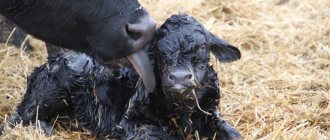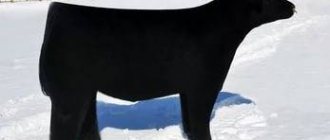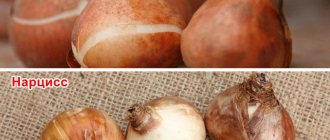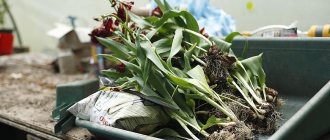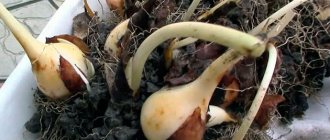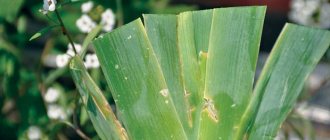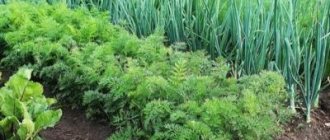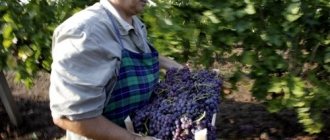After how many days does the hunt repeat (the cow takes a walk)
Heat is the period of a cow's reproductive cycle when she is capable of conceiving. In the same cow, heat is repeated at regular intervals - most often after 18-24 days . If the cycles are irregular, then this indicates a violation of reproductive function. These can be cysts of various etiologies, inflammatory processes, ovarian hypofunction and other diseases.
From practice(!): If your cow or heifer goes into heat (estrus) at different intervals, it is not necessary to immediately call a veterinarian. It happens that cycles are restored by themselves. Track the heat and try to cover. If another two or three cycles are not covered, then start to understand the problem.
Tips and tricks from experienced livestock breeders and veterinarians
If the reason why a cow does not want to walk is not pregnancy, then experts advise:
Review the diet and daily feed intake, taking into account the weight of the animal. Add vitamins and minerals if the cow is thin and not ready to breed. Contact a veterinarian to prescribe drug therapy to stimulate heat
Perhaps specialists will prescribe treatment with hormonal drugs. Check the cow for endometritis 1-2 weeks after calving, because this disease often causes a decrease in the functions of the reproductive organs. It is not recommended to allow cattle to constantly mate, so it is important to relieve excessive excitement, monitor the condition of the cow and her sexual relations.. Detecting pregnancy in a timely manner by the hormonal composition of the biological fluid is a win-win option
An ultrasound scan will help determine the condition of the reproductive organs and uterus. The method of palpation or palpation is effective. You can put a drop of milk in a glass of cold water. Complete dissolution will indicate pregnancy, spreading over the surface - lack of fertilization
Timely detection of pregnancy by the hormonal composition of biological fluid is a win-win option. An ultrasound scan will help determine the condition of the reproductive organs and uterus. The method of palpation or palpation is effective. You can put a drop of milk in a glass of cold water. Complete dissolution will indicate pregnancy; spreading over the surface will indicate a lack of fertilization.
If you follow all the recommendations of experts, it is unlikely that the cow will have problems with hunting.
However, it is important to monitor the animal’s well-being, regularly contact veterinarians, creating acceptable conditions for mating
https://youtube.com/watch?v=qw1VMeSDK8w
8-10 months. Insemination is carried out after she has gained more than 350 kg of weight. After calving, a cow comes into heat through a natural sexual cycle. Each animal has it individually. On average, sexual heat occurs after 21-28 days.
During pregnancy, the cow's body undergoes great stress. The metabolism and hormonal system are shifted. The fetus puts pressure on all internal organs. They also work under load.
After calving, all vital systems return to normal. Through its individual sexual cycle, the individual comes into heat. How many days after calving can a cow be inseminated?
When is the first heat after calving?
After calving, the first heat normally occurs after 18-24 days, but it is still too early to fertilize . The best time for covering (insemination) is in the second or third cycle after calving.
Firstly : one cycle is skipped so that the cow recovers after giving birth. This way you reduce the risk of postpartum diseases (paresis, acidosis, ketosis).
Secondly: it is irrational to inseminate cattle during the first heat after birth, due to the high percentage of unsuccessful attempts.
Can pregnant cows have tape discharge?
According to the temperature of the milk . To do this, an electronic measurement sensor is mounted in the manifold of the milking machine or directly in the milking cups. According to N.F. Klyuchnikova (2003), in all cases of measuring the milk temperature of cows in heat, its value was 0.8-1.0 0 C higher than the norm.
Read also Chickens of meat breed characteristics
12. Use of television . 24-hour monitoring of cow behavior using a television system is an undoubted advantage of this method. However, its use is hampered by the high cost of equipment and the impossibility of using it on pasture.
13. Use of dogs . The method is based on identifying cows in heat by smelling pheromones.
An indirect indicator of the accuracy of selection of cows for insemination can be bleeding from the genitals after insemination. Isolation of blood before 24 hours and after 72 hours indicates the failure of insemination.
When can you cover a chick?
The main criteria for a heifer’s readiness (biological and physiological) for pregnancy and bearing healthy offspring are:
- Weight – when they reach 70% of their body weight from the weight of an adult animal of the same breed (mother, for example).
- Age – from 14 to 18 months.
- The height at the withers is a sufficient indicator of 122-128 cm.
- Number of full-fledged hunts. It happens that heifers begin to come into heat very early, for example, at 5-6 months, usually it is 9-11 months, and it is not recommended to miss a large number of hunts (maximum 5).
Due to the combination of these factors, the age of the first coating may shift.
I recommend(!): It is better to do the first fertilization (and all subsequent ones as well) artificially, since this reduces the likelihood of injury from being covered by a bull and contracting sexually transmitted infections.
You can read more about the benefits of artificial insemination in this material.
Rules for re-insemination
In animal husbandry practice, it has been revealed that the effectiveness of insemination depends on many factors, not only on the time when the cow comes into heat. The state of the body has a great influence - its health, nutrition, the presence or absence of diseases, and mental state. In first-calf heifers, labor can be prolonged, so it is recommended that it occur 2-3 weeks before the rest of the cows are mated, so that calving occurs at approximately the same time.
During artificial insemination, several individuals are inseminated with one dose of bull sperm, for which it may be necessary to adjust the timing of their onset of heat. Individuals that are planned to be inseminated must be examined every 2 weeks. If necessary, it is necessary to review the diet and improve the nutrition of animals, because overall fatness affects the functionality of the reproductive system, the manifestation of heat and its duration.
Due to insufficient nutrition, the maturation process of the follicles in cows is disrupted and they develop poorly. The same thing is observed in obese animals; their estrus duration is shortened.
Cows with calves may also have problems with their normal reproductive cycle. To improve fertilization results, it is necessary to synchronize heat. Calves are taken from their mothers before the procedure begins, then the cows are fed nutritious feed, vitamins and premixes to bring the body back to normal. Vitamin E is especially valuable during this period, as it regulates reproductive function. The lack of a substance in the feed directly affects the performance of the system. Such cows need to be sheltered no earlier than 2 months after calving.
How to understand that a cow or heifer will soon come into heat
The best period for fertilization is always preceded by a preparatory stage - sexual arousal.
Here's how you can recognize an upcoming hunt:
- the animal is excited;
- behaves playfully;
- restless;
- sometimes moos for no reason;
- picks up neighbors, jumps on their backs, rubs themselves on them;
- obsessive, affectionate towards the owners;
- the cow has clear, viscous discharge;
- the loop (vulva) is swollen and red.
The duration of the preparatory period before hunting varies among cows. The above-described signs are observed by cattle owners most often during the day, the permissible range is within 10-12 hours and up to 2-3 days before the start of the hunt.
During this period, clear, clear discharge is clearly noticeable, sometimes quite abundant. The duration of clear, heavy discharge is one to two days.
What is sexual hunting
To identify signs of heat in a cow, how much she milks, it is necessary to understand the nature of this physiological phenomenon, which is called estrus.
Estrus is the period when the female allows the male to mate for mating. At this point, the ovaries produce large amounts of the sex hormone estrogen. Under its influence, the body produces clear mucus (discharge) from the cow's genital tract.
It allows sperm to swim to the place where they meet the egg, in the uterus, in the shortest possible time, and also gives a special chemical signal to the male’s sense of smell to stimulate his activity towards the individual in heat.
Also, during the period of excitement, the cow’s genitals increase in size, become denser, and the vulva becomes covered with red spots. This is the result of a rush of blood provoked by excitement.
The cervix increases in size to the diameter of a human finger or more
How to understand that it is time to cover a cow with a bull
A typical misconception of many livestock breeders is to cover the cow at the first signs of excitement , listed above. The fact is that an egg is needed for fertilization. But in this phase it has not yet matured and has not left the follicle in the ovary.
Important(!): If a bull covers a cow or heifer in this phase, then by the time the egg is released there will be no living sperm left and fertilization will not occur. Remember, if the cow itself jumps on others, it is too early to cover.
A cow (heifer) is ready to be covered by a bull when she allows other cows to mount her . This period is called hunting. It lasts on average from 2-6 hours to one day.
She develops a “stillness reflex” - the animal stands motionless, arching its back and moving its tail to the side. This is the most optimal time for natural insemination by a bull.
The best time to cover a cow with a bull is when she allows other cows to mount her.
In addition, mucous secretions contribute to better movement of sperm through the cervix and uterus, towards the fallopian tubes, where the fusion of two germ cells will occur.
After the effect of immobility, the cow may have some blood in her discharge after 2 days and this is normal.
WITHOUT CALVES AND MILK
Without being able to detect heat in cows in time, farms lose up to 15% of calves and reduce the volume of milk production, says Tatyana Moroz, VNIIPLEM specialist. And if the time of insemination is chosen incorrectly, then fertilization does not occur and the service period of the animal increases, which means that the costs for maintaining replacement young stock and non-lactating cows, for treatment and re-insemination of animals, and even for their culling due to infertility increase.
According to Oleg Bespalov, manager of the milk production management system, one missed hunt increases the service period by 20-22 days. The average cost of one day of service period is estimated at 70 rubles. per cow (mainly feed costs).
The problem of detecting hunting on tethered farms is especially pressing.
– For successful reproduction, it is important to properly maintain cows; first of all, animals need daily exercise. When a cow stands all day, her muscle tone decreases, which can later cause infertility,” notes Marina Goryainova, chief livestock specialist at the Kuban Agricultural Information and Consulting Center. Often, the absence, insufficient amount or excess of one of the components of the feed ration (vitamins, proteins, carbohydrates, calcium, phosphorus, manganese, iron, cobalt, etc.), even with good overall nutrition, can lead to infertility.
Iodine and vitamin E are especially important - with its deficiency, puberty is delayed, defective sexual cycles occur (without ovulation of the egg), the placenta is delayed, which leads to the occurrence of gynecological diseases and abortions.
– It turns out that even if heat is detected, pregnancy does not occur. This is due to low levels of hormones to support pregnancy, poorly developed ovaries, and the fact that the walls of the uterus are not adapted to support the fertilized egg, continues Goryainova.
When to inseminate a cow
From my many years of practice in artificial insemination (AI) of my own and other people's cows, the best time for artificial insemination is 10-12 hours after the appearance of the “immobility reflex”.
The fact is that thawed bull semen is capable of fertilization in about 24 hours or less , and not 2 days, like fresh ones. By the time of ovulation, when a mature egg is released, the thawed sperm simply will not survive and the AI attempt will be unsuccessful.
Note(!): Remember, if a cow begins to allow other cows to jump on her and stands calmly, then artificial insemination should be carried out not now, but after 10-12 hours. Otherwise, by the time the egg is released, the sperm will already have died.
An approximate diagram of the use of drugs to bring a cow into heat
Scheme No. 1
- On the first day (not earlier than 42 days after calving) we give an injection of Surfagon in a volume of 50 mcg + vitamins (preferably a high content of vitamin E)
- After 7 days, we introduce Estrofan in a volume of 2 ml + vitamins
- On day 9 we make Surfagon in a volume of 25 mcg without vitamins
- On the 10th day, no later than 16 hours after the introduction of Surfagon, it is necessary to inseminate.
Remains of Surfagon can be administered 2 weeks after insemination
Scheme No. 2
- On the first day (not earlier than 42 days after calving) injection of Magestrophan in a volume of 2 ml
- After 12 days we make Surfagon 5 ml
- After 7 days Magestrophan 2 ml
- After 48 hours Surfagon 5 ml
- The next day is insemination.
There are so many authors and schemes, the essence is the same, that drugs that destroy the corpus luteum are combined with those that accelerate the development of the follicle, and just in case, all this is supplemented with vitamins for insurance.
However, the success of manipulating a cow’s reproductive cycle depends not only on the drugs used and the accuracy of the schedule for their use, but also on the health of the cow and the quality of feeding.
What kind of discharge should a cow have before and after insemination?
Let's look at what normal discharge a cow should have during different periods of the reproductive cycle:
- In the first day or two from the onset of arousal, the discharge is abundant, transparent, and clean (sometimes scanty or absent altogether). The average duration of mucus discharge is a day or two.
- On the second day after the hunt there may (or may not) be blood in the discharge. The color and quantity can be very different - from scarlet to brown, from abundant to scanty. This happens due to the fact that at the moment of rupture of the follicle and the release of the egg at the end of the hunt, a small vessel could be damaged. Blood does not appear immediately after ovulation - it takes quite a long time to reach the exit.
- Further, the discharge gradually decreases and disappears completely.
- After coating, there may be scanty, cloudy, thick discharge after 7-10 days. They indicate the possible implantation of the embryo into the uterine wall and the formation of a cervical plug.
Important(!): If during any period of heat a cow’s discharge is yellow, white, green, transparent with cheesy inclusions, with an odor, bloody (before ovulation), then it is impossible to cover or inseminate - this is a symptom of a disease of the reproductive system. First you need to treat the animal, and then inseminate it during the next hunt.
What is silent hunting?
A silent hunt is when an animal, let’s say, remains silent about its readiness to mate.
Why is this happening? Scientists have guesses about this.
During a study of sexual heat in cows, it was noted that estrus was observed in most cases from 8 pm to 10 am; during the day this behavior was significantly lower in percentage terms.
And this suggests that sexual hunting is most likely overlooked due to the end of the usual working day. Tethered housing also complicates observation, when animals are physically unable to demonstrate a state of arousal.
Based on observational data, it is quite possible to call “quiet” hunts simply unnoticed, due to the lack of supervision of animals in the evening and at night.
When should you not impregnate a cow?
The inseminator or the owner himself can check the cow for gynecological inflammation before fertilization. This must be done because the sick animal:
- insemination is more difficult;
- has a higher risk of miscarriage and fetal mortality;
- it will be easier to be susceptible (like the fetus itself) to various pathologies of pregnancy;
- with untreated diseases are more prone to pathological childbirth (retained placenta, weak labor, etc.)
This is interesting(!): Against the background of inflammatory diseases, sperm is perceived by the cow’s body as a foreign protein and antibodies are produced to it. It is then impossible to cover such a cow - the more attempts, the more active the cow’s immunity works. In this case, only skipping a few hunts and treatment.
Inflammation of the genitourinary system is determined by the presence of discharge - purulent, bloody, with cheesy inclusions, abundant. Frequent urination, redness of the vulva (nonspecific), the presence of blisters and pustules on the vulvar mucosa should alert you.
Treatment of a cow after calving
In cases where calving occurred with difficulties (or if twins were born), the diet is prepared by a veterinarian.
If the birth was difficult and there was human intervention, complications may develop. Treatment of a cow after calving is prescribed when the birth canal or uterus is damaged, if poor cleansing has occurred, in cases where postpartum paresis has developed or hypocalcemia has been detected.
Let's look at the most common problems after childbirth:
The afterbirth is not completely released
Symptoms:
- the cow does not get up from her place, her back is twisted;
- discharge in the form of mucous fluid is observed;
- remnants of the placenta hang from the vagina;
- bleeding continues;
- there is a bowel disorder.
If these symptoms occur, you should urgently call a veterinarian. The danger in this case is that the amniotic tissue fragments remaining in the cow’s cavity will begin to disintegrate inside the body and provoke the development of an inflammatory process.
Postpartum paresis
Symptoms:
the animal moves very carefully; gets tired quickly and goes to rest; The cow has no appetite for several days.
In a neglected state, the animal may develop paralysis. In this case, doctors adjust the cow’s diet and recommend making the animal walk.
Hypocalcemia
Symptoms:
- the animal does not want to walk;
- there is a good appetite.
If these symptoms occur, you should contact your veterinarian. If he confirms hypocalcemia, he will definitely prescribe special medications (d0 and d1). The issue of treatment cannot be postponed in such cases, since without proper medical care the cow may die.
Udder swelling
Symptoms:
- the udder increases in size;
- the udder skin acquires a dense texture;
- swelling spreads beyond the udder, involving the lower part of the abdominal wall;
- after pressing on the mammary gland, the resulting hole straightens out very slowly;
- the skin of the organ becomes bluish in color;
- there is no sensation of pain;
- Some cows' milk becomes watery.
Most often, the development of this disease is caused by an incorrect diet. For example, when there is not enough straw in food, there is an oversaturation of sodium, potassium, or an excess or deficiency of protein.
Mastitis
Symptoms:
- seals appeared in the nipple area;
- milk yield is reduced;
- flakes appear in the milk;
- The process of expressing a cow is accompanied by a painful sensation.
This type of disease is most often associated with improper preparation of the cow for childbirth (preparation involves developing the correct diet for the animal and starting it).
The disease can manifest itself in different forms with different symptoms. In an advanced state, when mastitis is not treated, the owner of the cow should not be surprised why the animal does not have milk. Therefore, the cow should be examined by a veterinarian in a timely manner. This highly specialized doctor will select the appropriate treatment and will definitely prescribe energy drinks for the cows.
Cow behavior after insemination
After covering (or AI) and the end of the heat, the cow’s behavior does not change in any way. It is impossible to tell by the behavior of a cow whether she is pregnant or not. A pregnant cow or heifer will simply stop going into heat until calving.
Pregnancy can be accurately determined in two ways:
- Already a month after the hunt using ultrasound;
- 3 months after the hunt using a rectal examination.
Remember, if after covering the cow does not come into heat in the next cycle, this does not mean 100% pregnancy. Pregnancy must be confirmed.
When a cow comes into heat
In the mid-70s, scientists, using a blood test for progesterone, discovered that in dairy cows, the first ovulation begins 19.5 days after calving. The second occurs by day 44.5, and by day 63 the third occurs. On average, the frequency of sexual heat occurs every 19-22 days.
A healthy individual is ready to mount in 90-100% of cases during the period of the second and third ovulation, that is, from 44 to 63 days after calving.
If your cow is in heat during this period, then this is the most favorable period for insemination, from the point of view of the physiological state of the ward, as well as based on the accounting of your production.
The sooner calving occurs, the faster the calf will grow and there will be profit from milk, which can be approximately at least 300 rubles per day.
In general, the owner of the animal faces an important task: to provide conditions for the timely occurrence of pregnancy.
The complete absence of heat in a cow up to 50 days after calving indicates possible disturbances in the functioning of the ovaries, that is, their hypofunction.
When a persistent corpus luteum is formed, the timing of the next heat depends on the rate of resorption of the dead embryo and is usually 35-40 days.
Can a pregnant cow bleed?
Normally, blood appears in the discharge on the second day after the start of the hunt. If a cow bled a day after being covered by a bull, it means that you have correctly calculated the covering period and fertilization may have occurred.
When there was blood in the discharge during plating or immediately after it, then most likely ovulation occurred earlier and the egg had time to die before the sperm arrived.
If blood appears 12-24 hours after AI, it means that the procedure was timed correctly, just in time for the release of the egg. In this case, there is a high probability of pregnancy.
When blood appeared only on the third day, perhaps ovulation was delayed and the sperm did not survive to it.
This is interesting(!): A pregnant cow should not normally bleed. Either she is not pregnant and her cycles continue, or there are hormonal imbalances, or pathologies of the reproductive system.
Why does false hunting happen?
Sometimes it happens that a female cow shows interest in individuals of the opposite sex, but does not come into heat. Veterinarians explain the long absence of estrus for various reasons:
- conception;
- mild severity of symptoms (depending on the individual characteristics of the animal);
- ovarian pathologies (most often a cyst is diagnosed);
- prolonged recovery of the body after calving (occurs after a complicated form of childbirth);
- hormonal imbalance (caused by malfunctions of internal organs and systems);
- poor living conditions;
- poor nutrition;
- regular overfeeding and obesity.
Against the background of changes in the cow’s body, which are caused by hormonal imbalance, signs of false heat clearly appear.
In this case, the female may sniff the genitals of other individuals in the herd, allow either the dorsal mounting on her own, demonstrate her anxiety and refuse to eat. Important! Often, the peak of symptoms of sexual activity in cows occurs between 6 a.m. and noon. The vast majority of animals remain in heat for approximately 18 hours.
Due to the occurrence of arousal, there is a high probability of redness of the genitals. But this is not a reason to draw conclusions about the reproductive activity of cattle. You can distinguish a false estrus from a real one by the vaginal discharge of a heifer. In case of malfunctions in the body, they are absent or appear in small quantities. If the cow really needs a bull, mucus will be noticeable on her tail, hips and in the stall.
Timely determination of estrogenic activity in cows is a very important point for the reproduction of the herd and maintaining satisfactory milk production indicators. We hope our article will be useful to you in this regard.
How to detect silent heat in cows and heifers - the main signs
Silent hunting may not manifest itself at all or may manifest itself dimly. For example, there is no noticeable mucous discharge, unreasonable mooing, mood changes or jumping on their neighbors.
This may simply be an individual characteristic of the cow (heifer) and she is able to cover herself normally. Then you just need to learn how to identify the hunt from such a “quiet girl”.
Here are the signs by which I identify such candidates for insemination:
- Visually – I can tell by looking. The look of such cows becomes “crazy”, scared and surprised.
- By behavior in the herd. If there are still cows, then the hunting of the “quiet cow” will be noticeable from their behavior; they will jump on her.
- Sometimes it can be seen by the presence of clear vaginal discharge. Sometimes you can't notice anything.
- If this is not possible, then all you have to do is wait for blood. Normally, blood appears on the second day after the hunt. You can skip a couple of cycles and calculate with what regularity hunting occurs by blood. Then calculate the time for the next blood to appear, minus two days and expect the next hunt on that day.
It rarely happens that there are no signs at all. You need to watch carefully and you will probably notice at least one of the above.
In addition to individual characteristics, silent hunting can occur due to various disorders of the reproductive system. In any case, first try several times to detect silent heat and impregnate the cow (heifer), and only after three unsuccessful attempts call the veterinarian.
Clear signs of hunting
In modern veterinary medicine, there are many ways to determine cow heat in household conditions and large-scale farm production. But they are all based on the external signs of this cyclical process. In particular, we are talking about:
- restless behavior;
- decreased appetite;
- increased motor activity (the animal constantly rushes about in the pen or in the pasture, breaks from its leash);
- rapid breathing and heartbeat;
- increased body temperature (not always the case);
- decrease in milk yield;
- showing interest in bulls (the female lets them in and allows them to jump on her back);
- possible interest in the genitals of other cows (a heifer who is in the heat stage can herself jump on her other relatives in the herd);
- swelling and redness of the genitals (the symptom is observed from the first hours of estrus);
- excessive moisture in the vulva;
- highly noticeable mucous discharge from the cow vagina of varying consistency (initially they are transparent and liquid, but over time they become cloudy and thick, in the final phase they become viscous, sticky, cord-like; it should be noted that this process is characterized by periodicity);
- possible bleeding;
- relaxation of the uterine cervix and its openness.
Did you know? Cows sense the Earth's magnetic field and position their bodies along its lines of force during feeding and resting.
Why does a cow or heifer not cover herself (constantly walks around)
Most often, failures in the mating (insemination) of cattle are associated with:
- with incorrect determination of coverage time (or AI). Each animal has its own cycle and does not always fall under the standard calculation;
- diseases of the reproductive system (ovarian cysts, ovarian hypofunction, endometritis, vaginitis, etc.);
- mechanical obstructions such as vaginal obstruction caused by abnormalities or adhesions, ruptures, scars, tumors. Cervical deformation and others;
- inflammatory diseases . For example, with mastitis there may be problems with coverage, since the functions of milk production and reproduction are interrelated;
- almost all infectious diseases . The body simply does not have enough strength for fertilization, even if the reproductive system is not directly affected. Or conception still occurs, but the embryo dies (early embryonic mortality) at a period of 15 days or later;
- errors in content . For example, acidosis caused by unbalanced feeding. With acidosis, increased acidity, including the endometrium of the uterus, has an acidic environment, in which the embryo cannot implant.
What do you feed a cow after calving?
After calving, the cow licks the calf. With her tongue she massages him, stimulating the muscles of the body and limbs to contract. The calf quickly gets to its feet. While the newborn is resting, the cow needs to carry out hygiene procedures. She is washed and dried. For vaginal hygiene, prepare a solution of potassium permanganate and furatsilin. Be sure to change the bedding and clean the stall. The floor is covered with hay at least 10 cm thick.
On forums, farm workers ask what should be given to a cow after calving. After all procedures, the cow is given 10 liters of salted water to drink. Sugar is added to it. Table salt and sugar will replenish the body with minerals, restore the acid-base balance in the rumen, and retain fluid in the tissues.
After feeding, they bring the calf to the mother’s udder and give it a nipple. There is no need to specially train him to suck. The sucking reflex is innate. After feeding the calf, the first milking of the cow begins. If calving went well, then milk is collected in the first 2 hours.
- During milking, the cow needs to be given hay. The feeder is replenished. The animal eats as much as it can. The first day after calving she is not fed anything else. The recommended amount of hay is 5-7 kg.
- To ensure that the animal’s gastrointestinal tract does not experience stress and pathologies do not develop, it is not recommended to immediately prescribe a diet for lactating cows. On the 2nd day after calving, they give mash. To do this, steam 1-1.5 kg of bran or flour. The mash should be liquid. It's more of a drink than a food. Chatterbox cools the body and reduces inflammation. It has a laxative effect.
- 3-4 days add 1 kg of sunflower cake to the mash. As a result, the cow receives 7 kg of hay: it is given first. Semi-liquid mash and water.
- 5-6 days they begin to introduce silage and succulent feed. For the first time, 3 kg of each food is enough. It must be remembered that roughage is introduced first. Bran is replaced with ground grain and concentrates. They are given 2 kg. Dry mixtures are steamed. In summer, succulent grass is given instead of silage.
- On days 7-8, all types of food are increased by 500 g. The increase is gradual, so that by day 15 the animal is brought to a normal diet.
Animals are not given succulent food immediately after calving. Large amounts of carbohydrates can trigger acidosis or ketosis. An increased fermentation process can cause tympany. In this case, treatment with medication will be required. This means that the colostrum will be discarded. The calf will be switched to milk powder substitutes or special mixtures. The cow's productivity decreases. It is difficult to restore it, and almost impossible to increase it.
After 15 days, the cow should receive the following diet:
- 5 kg of hay;
- 32 kg silage;
- 4 kg of concentrates;
- 50 g salt;
- 40 g phosphates.
This diet is recommended for the stall period, for cows weighing 500 kg, with a milk yield of up to 14 kg of milk per day. If milk yield increases, then the amount of feed is increased. For every 5 kg of milk, an additional 20% of the initial diet is given. Part of the silage is replaced with vegetables and root crops: 25 kg of silage, 7 kg of root crops. The cow eats grain mixtures, meal, and cake as concentrates. It is recommended to add precipitates to the diet.
For the summer period, the diet is slightly changed. Instead of silage, the cow eats green grass in the pasture. Walking is carried out up to 6 hours a day. When switching to a summer diet, be sure to follow the feeding rules of the transition period. It must last for at least 15 days.
What to do if the cow is not covered
I recommend continuing to try to inseminate the animal for two, maximum three cycles (provided there are no obvious health problems) .
If there are signs of disease, treat and repeat insemination from the next hunt.
Next, either use a synchronization scheme (hormonal drugs), or try to maneuver with different seeds, use the superfecundation effect (insemination in one heat with the semen of different bulls for 15-20 minutes to create competition between them, causing an increase in fertility).
It is also rational to analyze previous experience (when blood appeared), selecting a different time for insemination. You can also use double coating (once during the hunt and repeat after 10-12 hours) and other methods.
Blog
Cow wandering is quite common on dairy farms. Excessive behavior causes large economic losses, and finding out its causes and eliminating them may require a lot of time and money.
Overrunning in a cow is a phenomenon when an apparently healthy animal with a normal sexual cycle, when inseminated with the sperm of a healthy bull, does not become pregnant for three or more times in a row.
Excessive walking leads to an increase in the cow's calving interval and service period. It turns out that the cow gives less milk and fewer calves over a certain period of time. This leads to loss of profit. Quality bull semen is also wasted. Added to all this are the costs of finding and eliminating the cause of excesses in cows. In some cases, such animals are subject to premature culling.
What could be the main reasons for excessive walking? There are many of them, we will name the main ones and consider them in more detail.
Wrong time for insemination
The best time for artificial insemination (AI) is the period from 13 to 20 hours after the start of heat. Cows that come into heat in the morning should be inseminated in the evening, and those that come into heat in the afternoon and evening should be inseminated the next morning. Most often, the signs of the onset of sexual heat are clearly expressed: restlessness, jumping on other cows, increased blood supply to the vestibule of the vagina, mucus secretion, slight redness, swelling and moistening of the labia. It is rare, but it happens that these signs are poorly noticeable in a cow, and then the specialist may miss the optimal time for AI. There are special devices that help farm workers track the time of heat. These include cage detectors, animal probes, pedometers, and video surveillance. However, it is not always possible to track the onset of estrus using these devices.
Absence or delay of ovulation
After the completion of sexual heat, the cow should ovulate approximately 10-15 hours later. And, if the cow was inseminated at the right time, then fertilization occurs. However, some animals may not ovulate in a particular cycle. Delayed ovulation is also possible - this is a phenomenon when ovulation occurs on the second day or later after the onset of sexual heat. In this case, the sperm have already lost their activity by the time the egg is released. To understand whether ovulation has occurred, it is necessary to perform rectal palpation of the cow for the presence of a dominant follicle before ovulation, and also on the 9-10th day after expected ovulation, you need to check for the presence of the corpus luteum. If the corpus luteum is not observed, then ovulation has not occurred. The reasons for the above phenomena are an imbalance of hormones of the reproductive cycle, which we talked about in other publications on our website.
Early embryo death (within 16 days after artificial insemination)
In this case, the embryo dies even before pregnancy is determined in cows. What can cause the death of an embryo? Firstly, it is stress in animals, which is caused by pain, long transportation, etc. Secondly, thermal influences, for example, summer heat, have a very negative effect on the development of the embryo. As is known from physiology, in the heat, blood from the internal organs moves to the surface of the body to cool the living organism. It turns out that the internal organs, including the genitals, are insufficiently supplied during this period. In hot weather, the quality of oocytes deteriorates, and the development of the embryo is also disrupted at the stage of its transformation into a blastocyst (RM Ferreira et. al, 2011). Thirdly, the death of the embryo is affected by diseases of the uterus, especially the latent form of endometritis. The presence of this disease can be indicated by purulent flakes in the mucus of a cow during estrus. Fourthly, progesterone deficiency can also lead to embryonic death. And fifthly, chromosomal abnormalities of the embryo play a role, as well as genetic incompatibility of the egg of a particular cow with the sperm of a particular bull. In these cases, the cow's body most often gets rid of the potentially unhealthy fetus.
Oxytocin deficiency in the cow's body
Lack of oxytocin leads to decreased uterine tone. And uterine contractions promote fertilization and consolidation of pregnancy. A lack of oxytocin is indicated by a large amount of urine excreted by a cow during rectal examination.
Violation of the rules for performing artificial insemination (AI)
In order for the insemination of a cow to be successful, it is necessary to correctly follow the technique of this procedure. Sperm must be stored and thawed properly (according to the attached instructions), and hygiene must be maintained during the AI procedure. Cows should not be agitated 15 minutes before and 15 minutes after AI. Because excessive anxiety leads to the release of adrenaline into the blood, and adrenaline inhibits the activity of oxytocin. After the AI procedure, the room where the animals are kept should not be too hot to avoid exposure to heat stress on the cows.
Energy deficiency in animals due to inadequate feeding
Nutritional deficiencies in cows significantly reduce the chances of successful insemination. Lack of energy leads to disruption of hormone synthesis, lack of ovulation, and embryo death. Animals that are malnourished have higher concentrations of non-esterified fatty acids (NEFAs) in their blood than animals that are well fed. At the same time, the concentrations of glucose, insulin and insulin-like growth factor (IGF-1) in cows with energy deficiency are reduced. All this leads to disruption of gonadotropin synthesis and follicle maturation.
Particular attention should be paid to the proteins that are present in cows’ feed. Proteins can be of protein or non-protein nature. Non-protein proteins include amide forms of organic feed compounds, as well as synthetic nitrogenous substances (urea) and nitrates. Such proteins are easily broken down in the rumen under the influence of its microflora. Proteins of a protein nature include both rapidly soluble (unprotected) and rumen-insoluble (protected) proteins, but digestible in the intestines. It is protected proteins that should predominate in the diet of a highly productive cow, especially during lactation. Protected proteins are contained in significant quantities in soybean meal, dry corn feed, dry stillage, and lupine seeds. If the animal’s diet is dominated by proteins that are soluble in the rumen, then the concentration of ammonia and urea in the blood increases. These compounds negatively affect the viability of reproductive cells of cows and bulls, as well as embryos. In addition, a high concentration of urea leads to disturbances in the functioning of the hypothalamic-pituitary system. Instant proteins are found in sunflower meal, peas, and grass silage. In addition, there are also indigestible, or acid-detergent, proteins. They do not dissolve in the rumen and are not absorbed in the intestines. Therefore, they do not contain any nutritional value.
All of the above reasons for excessive walking in cows are the most common, but far from the only ones. It follows from the article that good living conditions, hygiene and good nutrition significantly reduce the likelihood of excessive drinking. However, the reasons may be hormonal imbalances or diseases that are not visible to the naked eye. In this case, careful examination and treatment are required.
What problems can there be when covering a cow?
Technical: the cow is not standing, it is not possible to fix it. She kicks, sits down, lies down, jumps (we met all kinds).
You can read about different methods of restraining a cow in this section on the website moikorovu.ru.
Mechanical: vaginal obstruction caused by anomaly or adhesions, ruptures, scars, tumors. Deformation of the cervix.
The presence of mechanical obstacles on the way of sperm to the egg can only be determined manually - during examination. This can be done by a veterinarian, an inseminator, or simply a competent person.
A cow (heifer) in heat does not allow the bull to approach, does not stand in case of AI
If the cow has all the signs of being in heat, but does not have the “immobility reflex” and does not allow the bull to approach or does not stand on AI, you must call a veterinarian or inseminator and manually check the dilatation of the cervix and the readiness of the follicle (it will be clearly felt on one of the ovaries).
Cows almost always do not stand voluntarily during artificial insemination. They have to be recorded and this has nothing to do with the stage of the hunt.
Here is a video on the topic of inseminating a cow:
How to diagnose readiness
There are characteristic signs by which you can determine whether a cow is ready for insemination. At home, this can be recognized by the animal’s behavior - it becomes restless, moves a lot, moos, and eats less. You can almost unmistakably determine when it is time to happen by the fact that the cow allows other individuals, and not only bulls, but also females, to jump on her. At this time she stands calmly, motionless. Heat is also detected by external physiological signs: the cow secretes mucus from her genitals, which indicates its onset.
In animal husbandry there is such a thing as “silent” hunting. This is the state of the body of cows when the follicles mature and ovulation occurs, but there are no external signs or they are weak. This disruption of the reproductive cycle can occur in both cows and nulliparous heifers. The reasons for “silent” hunting are violation of housing conditions, feeding, lack of light or movement. Stress from moving to another house, herd, exposure to heat or high humidity.
Expert opinion
Zarechny Maxim Valerievich
Agronomist with 12 years of experience. Our best country expert.
Ask a Question
In a state of “quiet” heat, cows more often remain barren, the period for the next one is extended - it can take up to 2 months before the animal can be bred again.
To choose the best time for insemination, you need to take into account 2 criteria: the period after calving and the heat period. As for which cycle is best to fertilize animals, it is better to skip the first cycle, since it has been established that the functionality of the ovaries is restored faster than the uterus. A month after giving birth, the uterus may not yet be ready to bear a calf. The insemination itself is carried out 2 times with an interval of 10-12 hours, for example, in the morning, and the second in the evening. The interval for heifers may be shorter because they have a shorter period of heat.
Why doesn't the cow walk and what to do?
If the cow does not walk, then the reasons may be as follows:
- hormonal imbalance caused by poor diet;
- lack of weight is a sign of a lack of strength in the animal or an insufficient recovery period after the previous calving;
- infectious and inflammatory diseases;
- pregnancy is a good sign for farmers;
- ovarian cyst.
It happens that a cow shows a long-term interest in a bull and conducts a false hunt. This is due to hormonal imbalance or previous childbirth with complications. It is likely that to normalize the sexual cycle you need to wait time. The hormonal background must be completely restored for subsequent mating.
New farmers often ask why the cow is not covered and what to do. If the reason for the lack of heat is established, then veterinarians know different methods by which a cow can be brought into heat:
- Carry out a rectal massage of the uterus and ovaries for 5-7 minutes, stretch the area of the uterine cervix and vagina.
- Pour a hypertonic solution into the vagina: 2-3 tbsp. spoons of bicarbonate per 0.5 liters of distilled water.
- Wash the vaginal neck with a concentrate of warm water and sugar or a soda solution (2%) to increase the likelihood of fertilization.
Hunting near cows - Veterinarians induce heat in animals with hormonal stimulants with a one-time injection of hormone (serum) up to 300 units. However, an overdose of hormones should not be allowed and administered to emaciated cows.
- The stimulating drug estrofan, which contains a large amount of vitamins, has proven effective. The course of treatment is 10 days, after which artificial insemination can be performed.
To obtain successful results, you need an integrated approach to solving the problem. It is unlikely that you can bring a cow into heat with medication alone. Farmers advise monitoring the well-being of animals, creating optimal conditions for their mating.

